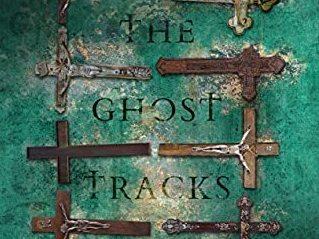Section Branding
Header Content
'The Ghost Tracks' is heartwarming horror fiction
Primary Content
We often talk about how scary or unsettling horror fiction is, but rarely about how it can also be incredibly fun to read — and sometimes even heartwarming.
Celso Hurtado's The Ghost Tracks is a wonderfully entertaining YA horror novel that combines a real San Antonio legend with classic elements of YA narratives — like growing up and first love, violence, and crime — to tell a story of friendship that explores the possibility of the supernatural.
Erasmo Cruz lives with his grandmother. His father died of an overdose and his mother abandoned him. He only has one friend, a weird kid nicknamed Rat. And Erasmo is desperate for money to help with his grandma's cancer treatment. After brainstorming with Rat, Erasmo decides to use his knowledge of the supernatural — something he and Rat have in common — to help people and make a bit of money. Erasmo had an encounter at the Ghost Tracks, a place in San Antonio where the spirits of kids who died in a horrific bus accident are said to help others who get stuck on the tracks, and Rat thinks this could bring in clients. Erasmo and Rat answer a few emails after placing an ad offering their services and soon find themselves entangled with a suspected murderer, a young woman whose younger brother might be possessed, and a religious fanatic who's convinced God is showing him the future so he can prevent bad things from happening.
The Ghost Tracks inhabits the interstitial space between YA stories and full-blown adult literature about horrible things. The way Hurtado writes about loneliness, insecurity, budding love, and friendship make this a perfect novel for the YA crowd. However, the dead body under the bed, the guy who gets his face smashed in with a bat, and the kid who might be possessed or be the victim of abuse make this a book that fans of the more gory and gruesome side of the genre will enjoy regardless of their age.
Hurtado does a few things well here. For starters, he understands that horror fails in the absence of empathy. Erasmo loves three things in life: his grandma, drinking milk, and reading from his favorite book, A Practical Guide to the Supernatural and Paranormal: The Writings of John F. Dubois. He's a likeable kid who's been dealt a band hand, and it's impossible not to root for a young man who's trying to help his sick granny, a wise woman who's seen a lot and reminds him to make "sure you never, ever forget what's in your blood." Also, Hurtado knows that not giving everything away is the best way to keep readers glued to a story. Things like Erasmo's otherworldly experience at the Ghost Tracks, the mystery of whatever is wrong with the kid he's asked to help, and the many questions surrounding both the murder of a young woman and the man who claims to see the future are more than enough to do just that because the author keeps us guessing by revealing things in sporadic fragments.
One of the most interesting things in this book is Erasmo's relationship to the supernatural. He is obsessed with it and is exposed to things that would make anyone a believer, but he's always skeptical. For example, he thinks the only thing the possessed kid needs is psychiatric help. He's also convinced that one of the men he tries to help is a killer and not a haunted victim, and he's sure that Billy, the man who sees the future, is just suffering from mental illness:
"All he knew was that every fiber in his being told him it wasn't possible that Billy had the sight. Maybe it was his inherently violent nature. Or perhaps it was his constant references to his supposed ability, as surely a true messenger of God would be humble and restrained. Or it may even have been the way Billy seem to be taking great glee in whatever awfulness was about to happen. Whatever the reason, his bones were screaming at him that he just couldn't be true."
And with everything that's going on this book, Hurtado also finds time to talk about otherness. Erasmo is a brown kid, and he's painfully aware of that whenever he's talking to the authorities. He's also poor, and his desperation about his grandmother's sickness and his utter lack of opportunities are tied to his socioeconomic background and absent parents.
Horror is sometimes about the fun of asking "What if?" In The Ghost Tracks, Hurtado asks that question in every chapter, and then offers answers that dance between "Of course this is all real!" and "There's no way any of this is even remotely real." That back-and-forth is great, and it's a great reminder that one of the best things about horror fiction is its ability to twist our guts like a rollercoaster ride and make us ask for more.
Gabino Iglesias is an author, book reviewer and professor living in Austin, Texas. Find him on Twitter at @Gabino_Iglesias.
Copyright 2021 NPR. To see more, visit https://www.npr.org.
Bottom Content

